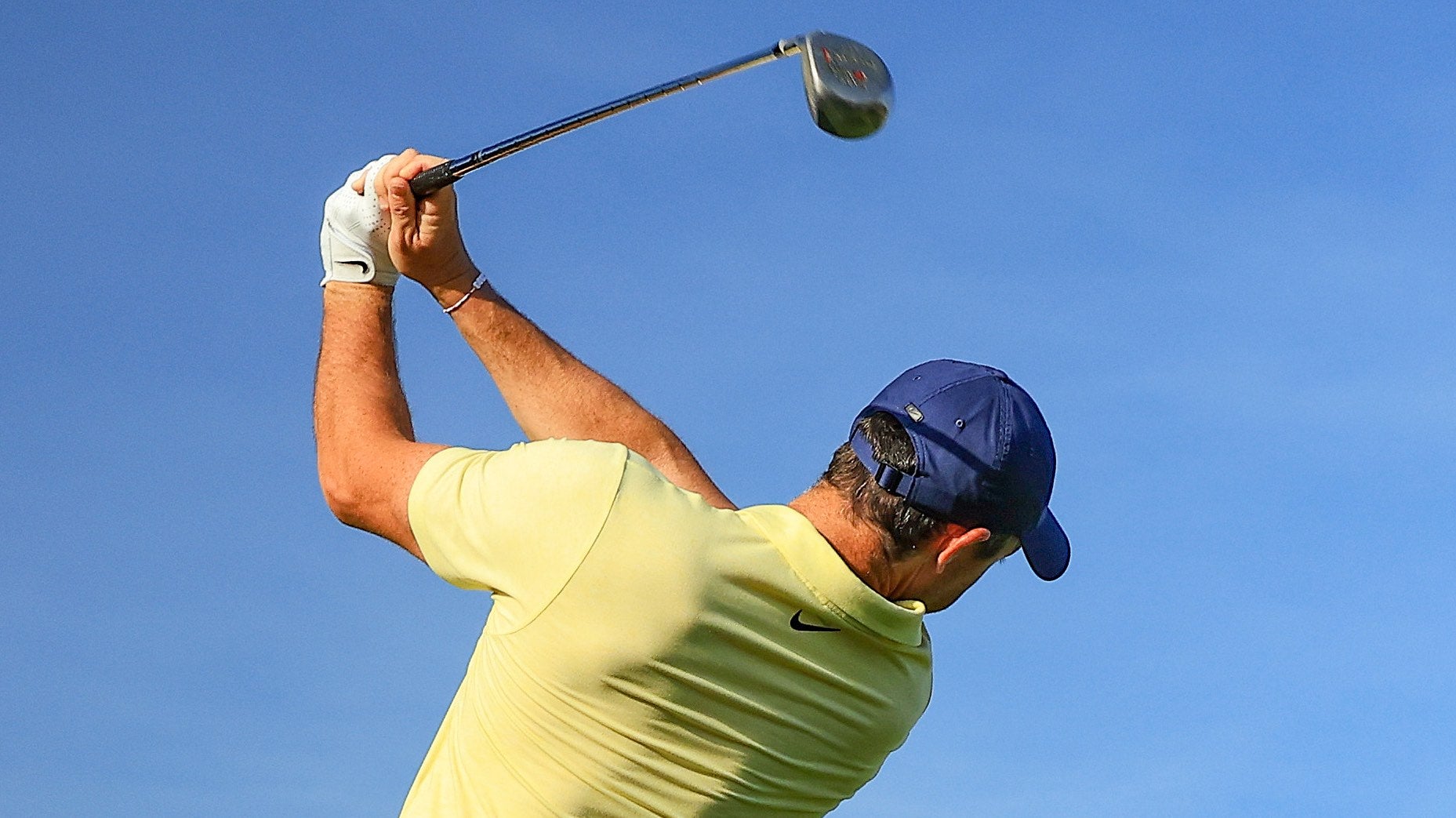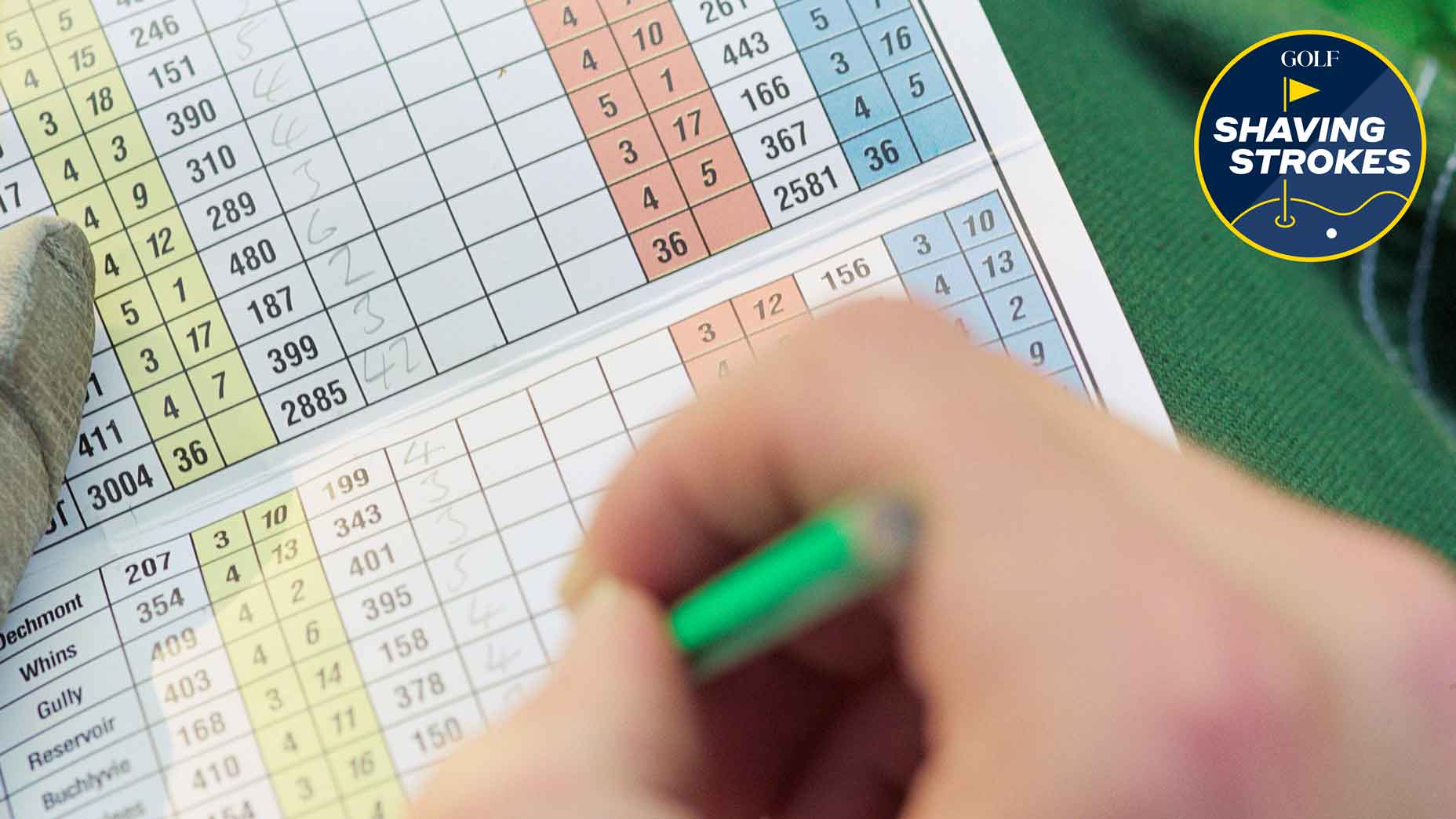
Rory McIlroy with a TaylorMade Original One driver this week.
Getty Images
In 2028, professional golfers will formally adopt a Model Local Rule golf ball that’s sure to change the equipment landscape. The USGA and R&A have stated a full-on rollback — amateurs are slated to join the pros in 2030 — is designed to curtail distance at the highest level of the game by slowing down the ball for golfers with ball speeds north of 183 mph.
The loss in distance, according to golf’s governing bodies, ranges from 13-15 yards for the fastest swingers, but pros, including Keegan Bradley, have claimed the number might be closer to 40 to 50 yards after conducting testing with a prototype that met the proposed standards. (GOLF.com also conducted a recent test pitting the modern tour ball against a balata model to see how much technology has progressed.)
Either way, a golf-ball rollback appears to be coming.
Some contend the changes are overdue, while others believe they don’t go far enough. Instead of simply focusing on the ball, Adam Scott recently suggested placing the spotlight on the driver instead — a club that’s ballooned in size from 190cc in the early 1990s to 460cc with today’s technologically advanced behemoths.
TaylorMade Qi10 Custom Driver
$599.99
Wrapped in a clean and confident package, the Qi10 driver has been strategically engineered to help players optimize distance and enhance forgiveness.
THE QUEST FOR INERTIA
TaylorMade’s goal with the Qi10 family is to make each driver as forgiving as possible, using advanced multi-material constructions to increase inertia. Qi10 is engineered for a balanced blend of distance and forgiveness.
COMPLETE PERFORMANCE
The Qi10 Driver features a lower CG projection and higher MOI than its predecessor, delivering balanced performance without any tradeoffs.
NEW INFINITY CARBON CROWN
An Infinity Carbon Crown covers 97% of the total crown area, creating a strategic advantage for mass redistribution and enhanced forgiveness.
View Product
“The biggest fundamental change in the game since I’ve been a pro, is traditionally the driver has been the hardest club to hit in the bag, and now it’s the most forgiving,” Scott said last year on the Smylie Show Podcast. “And that’s the biggest evolutionary change in the golf bag to me out of the equipment. The ball is the ball, but the driver went from the hardest club to hit to now the most forgiving and the go-to club for guys if they are nervous. The penalty for missing a driver just isn’t high enough anymore, in my opinion, at the top level. I’d like to address that first and see what knock on effects that has. If guys wanna swing at it 130 with a tiny driver head then good luck.”
Reducing the overall footprint of a driver and putting a premium on consistent contact is one way to reduce the “bomb and gouge” mentality at the professional level. In the latest announcement, the governing bodies confirmed they’ll continue to investigate driver performance in two areas going forward — spring-like effect and off-center forgiveness — so the driver could wind up in the crosshairs soon enough.
For the moment, however, it’s still business as usual for the longest club in the bag.
But what would happen if the game did decide to significantly reduce the overall driver footprint? In a video posted on social media, the DP World Tour gave Rory McIlroy the opportunity to take a few cuts with a 12-degree TaylorMade Original driver — first introduced in 1979 — sporting a steel shaft and a head size under 200cc.
“Twelve degrees,” McIlroy says as he analyzes the driver head. “Am I going to reach the fairway with it?”
In the video, McIlroy didn’t come close to hitting the fairway and watched as both tee shots moved well left of his intended target with ball speeds of 162 and 168 mph. It’s important to note, McIlroy averaged 184.47 mph last season on the PGA Tour, so it’s a slight dip in speed.
It wasn’t shown on camera, but McIlroy was also handed a graphite-shafted Callaway ERC driver to test as well. More excited about trying something with 9 degrees, McIlroy managed to hit a “flighted cut” with decent results: 275 yards of carry and a ball speed of 171 mph.

Getty Images
“That goes out there,” McIlroy said.
As someone mentioned off camera, the driver would be “illegal for [the tournament]” — likely the ERC II that was banned by USGA in 2001 — meaning the numbers might have been skewed just a bit.
Unless you’re part of the no-fun police, we can all admit it’s heartening watching the best players in the world wield old gear from time to time with mixed results. That said, even if the USGA and R&A did decide to reduce the overall footprint of the driver or make adjustments to the spring-like effect of the face, we’d likely never see a return to 130cc heads with steel shafts. This is what an extreme driver rollback could look like.
Would it make the game more enjoyable to watch? Depends who you ask. If anything, the video confirms reducing the overall driver footprint is one way to bring back the art of shotmaking and put a premium on accuracy.
Want to overhaul your bag for 2024? Find a fitting location near you at True Spec Golf.









